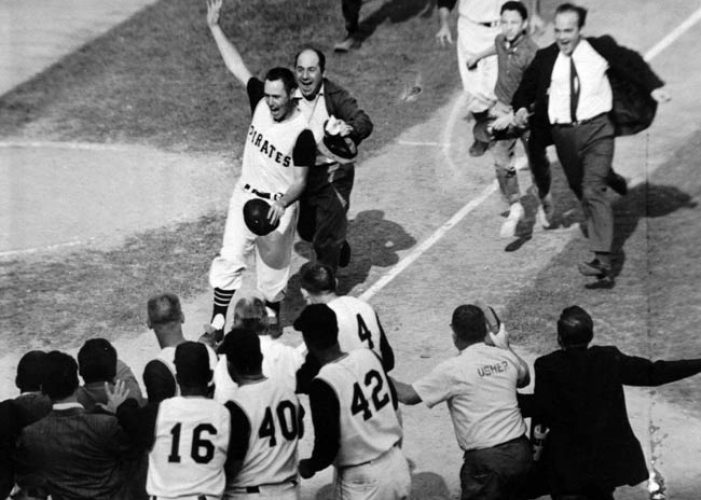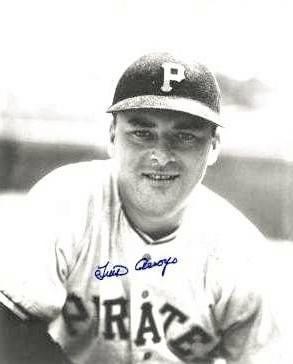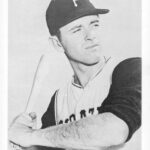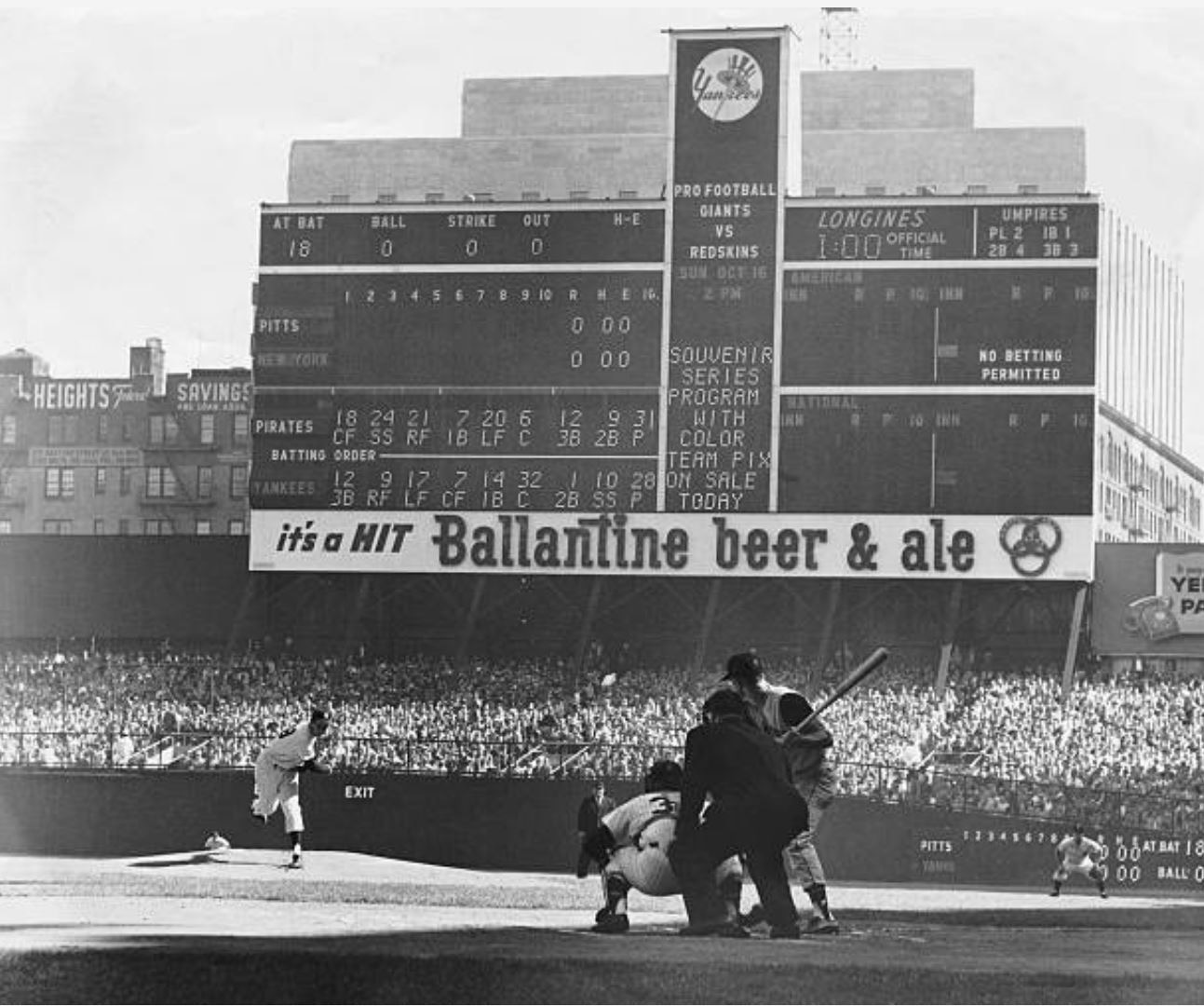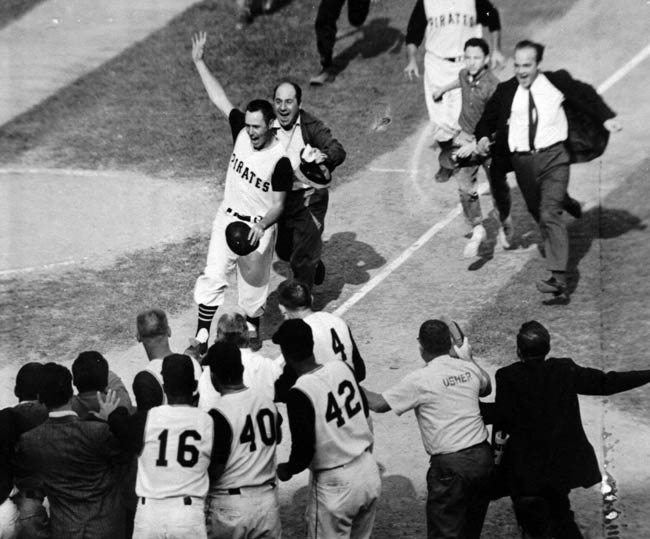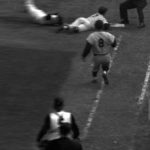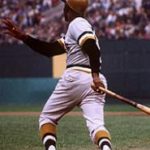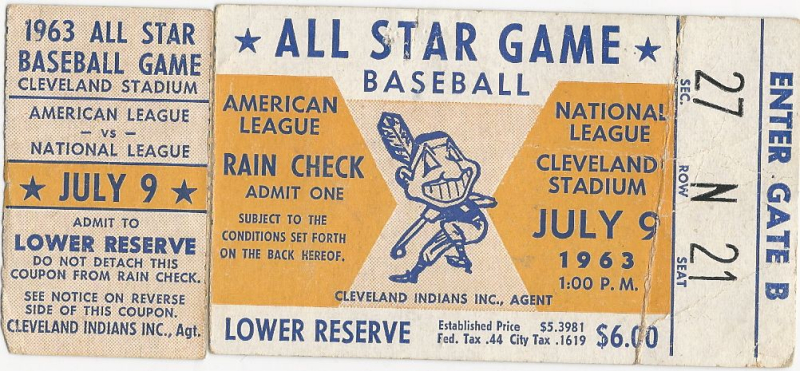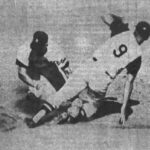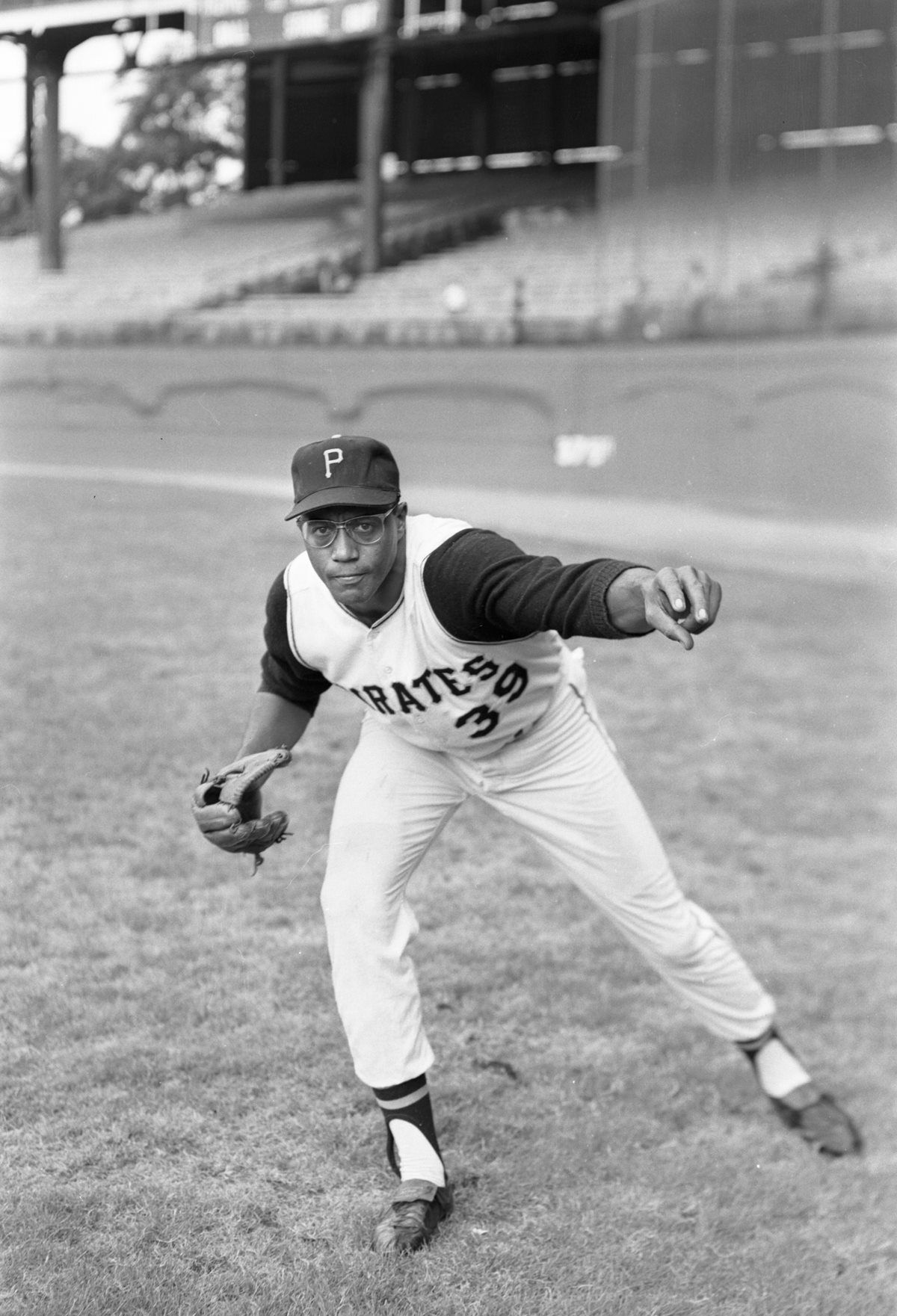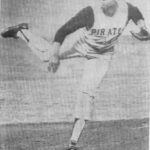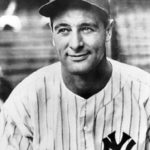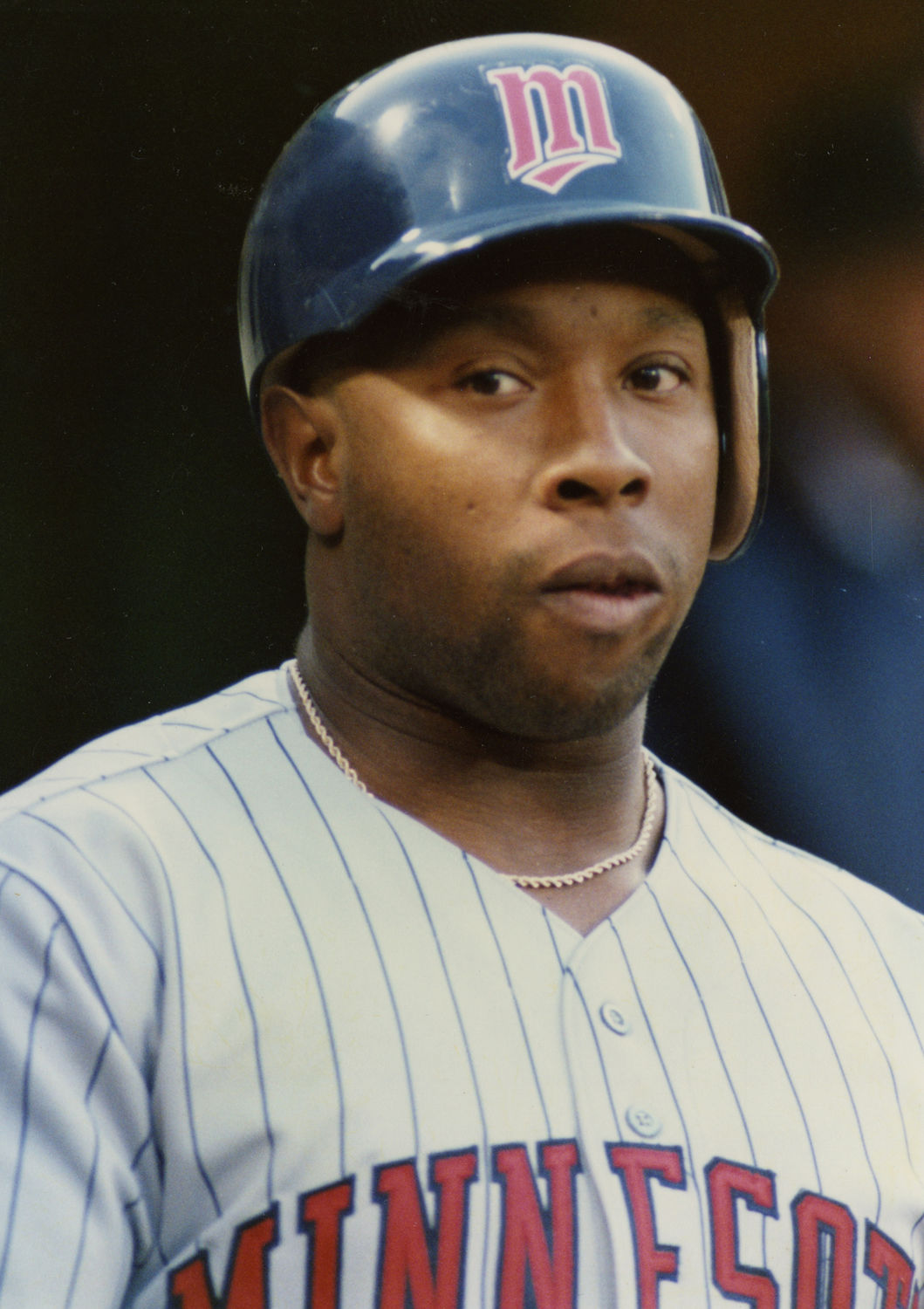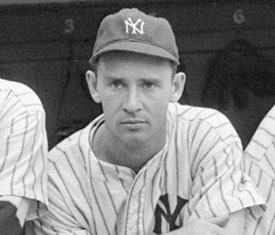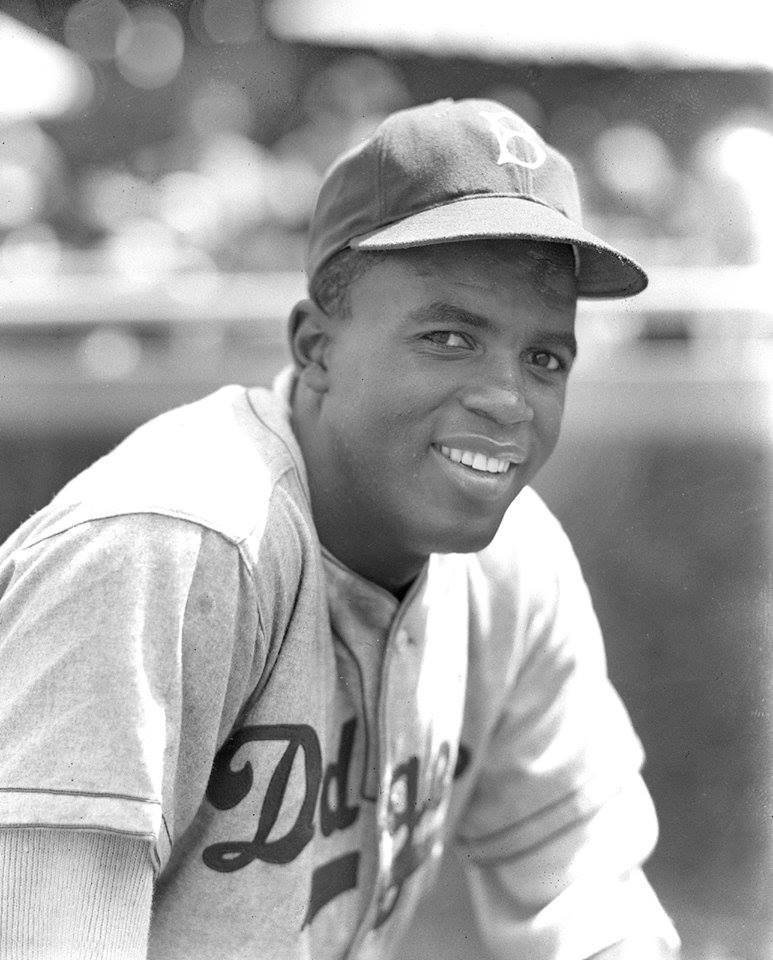Bill Mazeroski
Position: Second Baseman
Bats: Right • Throws: Right
5-11, 183lb (180cm, 83kg)
Born: September 5, 1936 in Wheeling, WV
High School: Warren Consolidated HS (Tiltonsville, OH)
Debut: July 7, 1956 (11,387th in major league history)
vs. NYG 3 AB, 1 H, 0 HR, 0 RBI, 0 SB
Last Game: October 4, 1972
vs. STL 1 AB, 0 H, 0 HR, 0 RBI, 0 SB
Hall of Fame: Inducted as Player in 2001. (Voted by Veteran’s Committee)
View Bill Mazeroski’s Page at the Baseball Hall of Fame (plaque, photos, videos).
Full Name: William Stanley Mazeroski
Nicknames: Maz
View Player Info from the B-R Bullpen
View Player Bio from the SABR BioProject
Nine Players Who Debuted in 1956
Frank Robinson
Luis Aparicio
Bill Mazeroski
Curt Flood
Don Drysdale
Moe Drabowsky
Tito Francona
Charlie Lau
Whitey Herzog
The Bill Mazeroski Teammate Team
C: Manny Sanguillen
1B: Willie Stargell
2B: Dave Cash
3B: Richie Hebner
SS: Dick Groat
LF: Bob Skinner
CF: Bill Virdon
RF: Roberto Clemente
SP: Bob Friend
SP: Harvey Haddix
SP: Steve Blass
SP: Dock Ellis
SP: Bob Veale
RP: Roy Face
M: Danny Murtaugh
Notable Events and Chronology for his Career
Although he is probably remembered most for his championship-clinching home run against the Yankees in Game Seven of the 1960 World Series, Bill Mazeroski gained admittance to Cooperstown primarily on the strength of his outstanding defense. Considered by many baseball experts to be the greatest defensive second baseman in baseball history, Mazeroski is the major league record-holder for players at his position for most double plays in a season (161), most double plays in a career (1,706), most years leading a league in double plays (eight), and most seasons leading in assists (nine). Noted baseball analyst and sabermetrican Bill James has written that, “Bill Mazeroski’s defensive statistics are probably the most impressive of any player at any position.”
William Stanley Mazeroski was born in Wheeling, West Virginia on September 5, 1936. After excelling in both baseball and basketball at Warren Consolidated High School in Tiltonsville, Ohio, the 17-year-old infielder signed a professional contract with the Pittsburgh Pirates in 1954. Primarily a shortstop in high school, Mazeroski was shifted to second base in the minor leagues – a position he played almost exclusively throughout his entire major league career. The second-sacker made his major league debut with the Pirates some two years later, on July 7, 1956.
Mazeroski displayed little in the way of offense as a rookie, batting only .243 and driving in just 14 runs during the second half of the 1956 campaign. However, he acquitted himself quite well in the field, impressing his more experienced double play partner, Dick Groat, with both his defensive skills and his intelligence. The shortstop later said of Mazeroski, “He had marvelous range, great instincts, and never threw to the wrong base. His release on the double play was phenomenal. When Maz was a kid, I had a couple of years’ experience on him. If I would move Maz and tell him to play here or play there, I never had to tell him a second time. Ever.”
Mazeroski continued to play solid defense as his offensive game began to improve in 1957. The 20-year-old second baseman hit eight home runs, drove in 54 runs, and batted a career-high .283 in his first full big league season, establishing himself in the process as one of the National League’s better young players. He had perhaps his finest all-around year, though, in 1958, when he hit a career-high 19 home runs, knocked in 68 runs, scored 69 others, batted .275, and won the first of his eight Gold Gloves. Mazeroski’s solid season earned him his first nomination to the All-Star Team and an eighth-place finish in the league MVP voting .
After a subpar 1959 campaign, Mazeroski bounced back to hit 11 homers, drive in 64 runs, and bat .273 in 1960. He also captured his second Gold Glove Award and was named to the N.L. All-Star Team for the third straight time. Mazeroski led all major league second basemen in putouts (413), assists (449), double plays (127), and fielding percentage (.989). The Pirates won their first pennant in 33 years, and Mazeroski etched his name into baseball lore when he hit one of the most famous home runs in the history of the sport against the heavily-favored Yankees in the World Series.
After splitting the first six games of the Series, the Pirates and Yankees engaged in a see-saw battle in Game Seven. With the score tied 9-9 heading into the bottom of the ninth inning at Pittsburgh’s Forbes Field, Mazeroski led off the frame by hitting the second pitch delivered to him by New York hurler Ralph Terry over the leftfield wall to give the Pirates their first world championship since 1925. Mazeroski, who hit two homers, knocked in five runs, and batted .320 during the Series, was subsequently named the Major League Player of the Year by The Sporting News.
Despite a solid performance from Mazeroski both years, the Pirates failed to contend for the National League pennant in either of the next two seasons. The second baseman was particularly effective in 1962, hitting 14 home runs, knocking in 81 runs, batting .271, compiling a league-leading 509 assists, and participating in a major-league leading 138 double plays. However, the inability of Pittsburgh to mount a serious challenge for the National League flag prompted team management to trade away the other three starting members of its infield at the conclusion of the 1962 campaign. With first baseman Dick Stuart, third baseman Don Hoak, and shortstop Dick Groat all gone, the 26-year-old Mazeroski suddenly became the “old man” of the Pirates infield.
Mazeroski teamed up with numerous shortstops the next several seasons to give the Pirates the league’s best double play combination. After being paired up with Dick Schofield from 1963 to 1965, Mazeroski combined with Gene Alley in 1966 to establish a new single-season record for twin-killings by a second baseman (161). Maz also had one of his finest offensive seasons, hitting 16 home runs, driving in a career-high 82 runs, and batting .262, while appearing in all of his team’s games for the first of two straight years.
After playing in 143 games in 1968, Mazeroski saw his playing time gradually diminish the next few years as his career wound down and young second baseman Dave Cash became a more integral part of Pittsburgh’s plans. Reduced to a utility role his last two years, Mazeroski retired at the conclusion of the 1972 campaign. He ended his career with 138 home runs, 853 runs batted in, 769 runs scored, 2,016 hits, and a .260 batting average. Mazeroski appeared in seven All-Star Games and won eight Gold Gloves in his 17 major league seasons.
Although Mazeroski’s offensive numbers were hardly overwhelming, it must be considered that he spent virtually his entire career playing in spacious Forbes Field, with its distant outfield fences. He hit 93 of his 138 home runs on the road (or 68%) over the course of his career, illustrating that Mazeroski actually had much more power than his numbers would seem to indicate.
Still, it was Mazeroski’s defense that earned him his greatest claim to fame. He had soft hands, good range, superb technique, and a sturdy set of legs that prompted many an opposing baserunner to think twice before sliding aggressively into second base to break up a double play.
Former Pirates centerfielder Bill Virdon said of Mazeroski, “Nobody ever played second base like he did, and I’ve been in the game 50 years. The impressive thing about Maz was that he did everything perfectly. I backed him up for 10 years and never got a ball.”
Gene Alley, Pittsburgh’s regular shortstop for most of the second half of Mazeroski’s career, described his teammate’s technique: “Maz never really caught the ball, never really closed his glove over it, turning the double play. He could tilt his glove at an angle and hold his hand just so. It was a wonder the ball stayed in there. Then it would slide out in his hand just like that. He was the only one I ever saw do it like that.”
Mazeroski’s defensive excellence eventually prompted the Veterans Committee to elect him to the Baseball Hall of Fame in 2001. The second baseman’s induction drew criticism from some quarters since many people felt that a player with such modest offensive numbers should not be deemed worthy of election to Cooperstown. As a result, the composition of the Veterans Committee was altered, giving the living members of the Hall of Fame a greater say in which players join them in future years.
@ET-DC@eyJkeW5hbWljIjp0cnVlLCJjb250ZW50IjoicG9zdF90YWdzIiwic2V0dGluZ3MiOnsiYmVmb3JlIjoiTGVhcm4gTW9yZSBhYm91dCB0aGUgdGVhbXMsIHBsYXllcnMsIGJhbGwgcGFya3MgYW5kIGV2ZW50cyB0aGF0IGhhcHBlbmVkIG9uIHRoaXMgZGF0ZSBpbiBoaXN0b3J5IC0gLSAtIC0gLSAtIC0gIiwiYWZ0ZXIiOiIiLCJsaW5rX3RvX3Rlcm1fcGFnZSI6Im9uIiwic2VwYXJhdG9yIjoiIHwgIiwiY2F0ZWdvcnlfdHlwZSI6InBvc3RfdGFnIn19@
Factoids, Quotes, Milestones and Odd Facts
Played For
Pittsburgh Pirates (1956-1972)
Similar: Granny Hamner, Frank White
Linked: Dick Groat, Ozzie Smith
Best Season, 1966
Maz played every game and committed just eight errors. His fielding average of .992 was one of the best in history, and he led the league in chances, assists, and putouts by a second baseman as well. Offensively he hit essentially his career average (.262), with a low OBP (.296 – basically his career average), but he hit 16 homers and had 45 extra-base hits, one of his best totals ever.
Awards and Honors
1958 NL Gold Glove
1960 NL Gold Glove
1961 NL Gold Glove
1963 NL Gold Glove
1964 NL Gold Glove
1965 NL Gold Glove
1966 NL Gold Glove
1967 NL Gold Glove
Post-Season Appearances
1960 World Series
1970 National League Championship Series
1971 National League Championship Series
1971 World Series
1972 National League Championship Series
Hitting Streaks
16 games (1961)
16 games (1961)
All-Star Selections
1958 NL
1959 NL
1960 NL
1962 NL
1963 NL
1964 NL
1967 NL
Best Strength as a Player
His reflexes and ability to release the ball quickly on the pivot.
Largest Weakness as a Player
He was not a very good offensive player in most of his seasons.

